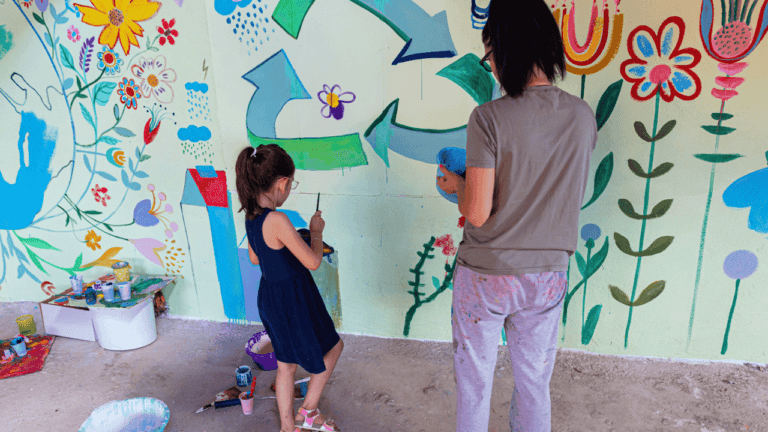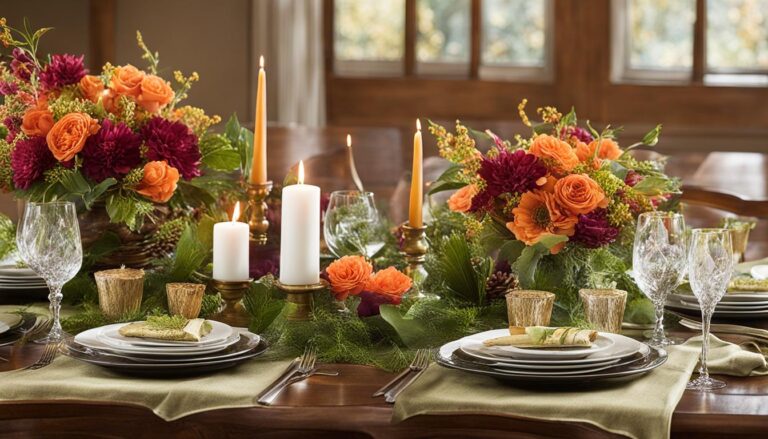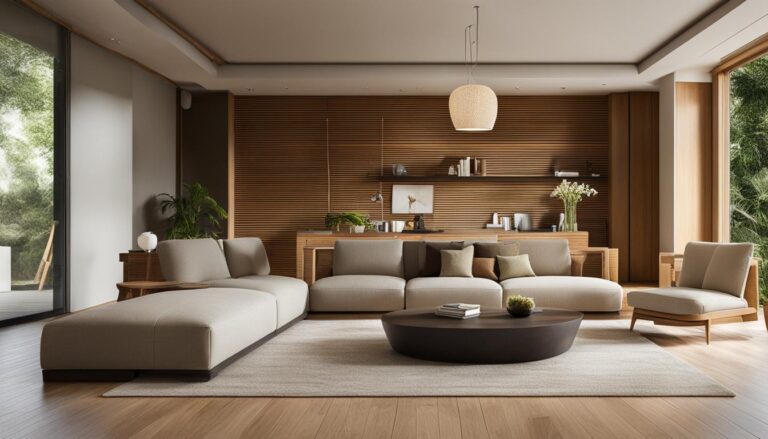Understanding Your Home Decor Style
When it comes to decorating your home, it’s important to understand your personal style. Your home decor style reflects your personality and sets the tone for your living space. Whether you’re moving into a new home or looking to refresh your current space, here are some tips to help you discover your home decor style and create a beautiful, personalized environment.
 1. Start with Inspiration
1. Start with Inspiration
Begin by gathering inspiration from various sources. Browse through interior design magazines, visit home decor websites, and create a Pinterest board to collect images that resonate with you. Pay attention to colors, patterns, and furniture styles that catch your eye. This will give you a starting point to identify your preferences.
2. Consider Your Lifestyle
When considering your lifestyle in relation to home design, it’s important to assess how your daily activities, habits, and preferences will interact with your living space. This approach ensures that your home not only looks appealing but also functions in harmony with your way of life.
Entertaining vs. Privacy: If you love hosting gatherings, think about creating open, inviting spaces with ample seating and a layout that encourages interaction. A well-equipped kitchen and a dining area that can accommodate a group would be key. On the other hand, if you value privacy and tranquility, you might prioritize cozy nooks, a more segmented layout, and areas for individual activities like reading or crafting.
Family Considerations: For those with children, safety and durability are paramount. This might mean opting for rounded furniture edges, washable paint, and sturdy fabrics that can withstand spills and stains. Creating designated play areas and incorporating ample storage for toys and games can help keep your space organized and child-friendly.
Pet-Friendly Choices: Pet owners should consider materials that are resistant to scratches and easy to clean. Hardwood floors or tiles might be preferable over carpets, and furniture with removable and washable covers can be a lifesaver. Also, consider creating a specific space for your pets, like a feeding station or a cozy bed area.
Work-from-Home Spaces: If you work from home, creating a dedicated workspace is essential. This doesn’t necessarily mean a separate room; a quiet corner with a desk and comfortable seating can be just as effective. Good lighting and minimal distractions are key factors to consider.
Outdoor Living: If you enjoy spending time outdoors, consider how your interior space can connect with outside areas. Large windows, glass doors, or an attractive outdoor seating area can make a big difference. If gardening is a hobby, think about incorporating plant-friendly spaces or a small greenhouse.
Ease of Maintenance: Your tolerance for upkeep should influence your choices in materials and finishes. For instance, certain countertops may require more maintenance than others, and some flooring materials might need regular sealing or special cleaning.
Aesthetics vs. Function: While it’s important that your home reflects your personal style, functionality should not be compromised. For example, minimalist designs can be visually appealing, but if you require a lot of storage, ensure that this need is met in a way that doesn’t clutter or disrupt the aesthetic you desire.
Adaptability Over Time: Consider how your needs might change over time and how your home can adapt to those changes. This might mean choosing furniture that can serve multiple purposes or designing rooms that can be easily repurposed.
By taking a comprehensive look at your lifestyle, you can create a living space that is not only a reflection of your personal taste but also a practical environment tailored to your daily life. This balance between form and function is key to creating a home that feels both comfortable and personal.
 3. Assess Your Existing Belongings
3. Assess Your Existing Belongings
Before embarking on a shopping spree, take inventory of your existing belongings. Identify items that hold sentimental value or pieces that you absolutely love. These cherished items can serve as a foundation for your decor style. Consider how you can incorporate them into your new design scheme or use them as inspiration for new additions.
Identify Sentimental Pieces: Start by identifying items that hold sentimental value. These could be family heirlooms, gifts from loved ones, or pieces that remind you of special moments. These items are irreplaceable and often carry stories and memories that are priceless. Recognizing their emotional value is key in deciding how to weave them into your new decor.
Evaluate Your Favorites: Look for pieces that you absolutely love. These could be items that you’re drawn to because of their aesthetic, color, texture, or design. Ask yourself why these pieces stand out to you. Is it the style, the era they represent, or the way they make you feel? Understanding this can help define your personal decor style.
Consider the Fit: Evaluate how these items can fit into your new design scheme. Can an old, cozy armchair become a statement piece in your living room? Could a vintage lamp find new life in a modern setting? Sometimes, contrasting styles can create a unique and personal space.
Repurpose and Reimagine: Think creatively about how you can repurpose or adapt existing items. An old dresser might be transformed with a coat of paint, or a collection of frames could become a gallery wall. This not only saves money but also gives your space a personalized touch that new items can’t replicate.
Mix and Match: Don’t be afraid to mix old and new, or different styles and textures. A blend of contemporary and vintage, or sleek and rustic, can add depth and character to your space.
Create a Cohesive Look: While it’s important to incorporate items you love, it’s equally crucial to ensure they don’t clash with your overall design vision. Find ways to create harmony through color, material, or thematic connections.
Declutter: This is also a great time to declutter. As you sift through your belongings, decide what no longer serves you or doesn’t fit with your envisioned aesthetic. This helps in creating a more organized and aesthetically pleasing environment.
Plan for New Additions: Once you’ve assessed what you already have, you can make more informed decisions about new purchases. Look for pieces that complement your cherished items and fill in the gaps in your current collection.
Document Your Inventory: Keep a record of the items you decide to keep. This can be a simple list or a more detailed inventory with photos. This documentation can be a useful reference as you plan your new space.
By thoroughly assessing your existing belongings, you can create a space that is not only beautiful and cohesive but also deeply personal and reflective of your journey and experiences.
 4. Explore Different Styles
4. Explore Different Styles
Exploring different home decor styles can be an exciting journey, as each style brings its own unique aesthetic and atmosphere to a space. Here’s a closer look at the styles you mentioned:
- Modern: This style is characterized by its clean lines, uncluttered spaces, and emphasis on simplicity and functionality. In modern decor, you’ll often find a neutral color palette with pops of color, and materials like metal, glass, and steel are commonly used. Furniture tends to have a sleek, streamlined appearance, and decorative elements are kept to a minimum, creating a space that feels open and airy.
- Traditional: Traditional decor is all about classic elegance and time-honored elements. This style often includes rich color schemes, a variety of textures and patterns, and substantial, well-crafted furniture. Decorative detailing like wood paneling, crown molding, and intricate fabric patterns (like florals or plaids) are hallmarks of this style. Traditional spaces often evoke a sense of comfort and history.
- Scandinavian: Inspired by the simplicity and functionality of Nordic design, the Scandinavian style is known for its minimalist yet cozy approach. It emphasizes clean lines, muted colors, and natural materials like wood and leather. The overall feel is light and airy, with a focus on natural lighting and uncluttered spaces. This style also incorporates elements of nature, bringing the outdoors inside.
- Bohemian (Boho): Bohemian decor is for those who want their homes full of life, culture, and interesting items from all over the world. This eclectic style is defined by a lack of structure, opting instead for carefree layers of pattern, texture, and color. Vintage furniture and light fixtures, globally inspired textiles and rugs, and items with a story behind them are key to this aesthetic.
- Industrial: Industrial style is inspired by the look of factories and industrial spaces. It showcases raw, unfinished materials like exposed brick, concrete, and metal. This style often features a monochromatic color scheme with high contrast, and it incorporates reclaimed or recycled materials. Industrial decor is utilitarian and straightforward, with an emphasis on functionality.
When researching these styles, consider how they might blend with your lifestyle and existing space. Do you prefer the clean, orderly feel of a modern home, or are you drawn to the warmth and history of traditional decor? Perhaps the cozy, nature-infused Scandinavian style speaks to you, or you’re attracted to the eclectic, free-spirited vibe of bohemian decor. Maybe the raw, edgy aesthetic of industrial design resonates with your taste.
Remember, it’s common to blend elements from different styles to create a look that’s uniquely yours. Your home is a reflection of your personality, so feel free to mix and match elements that appeal to you from each style. The key is to create a space that feels comfortable and inviting and represents your personal aesthetic.
 5. Experiment with Colors and Textures
5. Experiment with Colors and Textures
Experimenting with colors and textures is an exciting and creative way to enhance the aesthetic appeal of your home. The interplay of colors and textures can dramatically alter the mood and style of a room, making it an essential aspect of home decor. Here are some insights into how you can effectively use colors and textures:
Experimenting with Color Palettes
Neutral Colors for a Calm Space: Neutral tones like whites, beiges, and grays are perfect for creating a serene and timeless ambiance. They are particularly effective in smaller spaces, making them appear larger and more open. These colors also serve as a canvas, allowing other elements of the room to stand out.
Bold Colors for Personality: Introducing bold colors can inject personality into your space. Vibrant shades like deep blues, bright yellows, or rich greens can be used as accent colors on a single wall, in decorative pieces, or in soft furnishings to create a focal point.
Color Schemes and Balance: When choosing a color scheme, consider balance and harmony. Complementary colors, found opposite each other on the color wheel, can create a dynamic yet harmonious look. Analogous colors, which are next to each other on the color wheel, offer a more subtle and cohesive appearance.
Mixing Textures for Depth
Variety in Fabrics: Incorporate a mix of fabric textures to add depth to your decor. Smooth fabrics like silk or velvet can be paired with rougher textures like burlap or wool. This contrast in fabrics can be applied in throw pillows, curtains, or upholstery.
Natural Elements: Incorporating natural textures can bring an organic and earthy feel to your home. Rough wood, stone, and plants are great ways to introduce natural elements. These textures not only add visual interest but also help create a connection to the outdoors.
Metallic Accents: Adding metallic elements like brass, chrome, or copper can introduce a touch of elegance and modernity. Metallic textures work well in light fixtures, decorative objects, and furniture hardware, offering a shiny contrast to softer materials.
Layering Textures: Layering different textures can create a rich, inviting atmosphere. Rugs over hardwood floors, throws on sofas, and textured wall hangings can all contribute to a layered and cozy feel.
Practical Considerations
Functionality and Comfort: While aesthetics are important, don’t forget about functionality and comfort. Ensure that the materials you choose are not only beautiful but also practical for your lifestyle.
Lighting and Color Interaction: Be mindful of how natural and artificial light interact with your chosen colors and textures. Some colors may appear differently under various lighting conditions.
Personal Style Reflection: Ultimately, your color and texture choices should reflect your personal style and the atmosphere you want to create. Don’t be afraid to experiment and evolve your space over time.
Experimenting with colors and textures is about finding the right balance that speaks to your personal taste while creating a cohesive and inviting home environment.
Frequently Asked Questions
Decode the magic of gardens with our guide to Landscaping Styles Frequently Asked Questions.
- To determine your decorating style, start by collecting images of rooms and designs that appeal to you. Look for common themes in your selections, such as color schemes, patterns, and furniture styles. You can also take online quizzes for a fun way to explore different styles and see which ones resonate with you the most.
- Begin by listing all the items you need or want to change in your space. Research average costs for each item and prioritize based on your needs and the impact they’ll have on your space. Always include a contingency fund for unexpected expenses. It’s important to be realistic and flexible with your budget.
- Start with colors you naturally gravitate towards in your daily life. Consider the mood you want to set in the room – calming blues and greens for a bedroom, or energizing yellows and reds for a living space, for example. Use color swatches to see how different shades complement each other, and remember to consider the room’s lighting, as it can significantly affect how colors appear.
- A good starting point is to focus on the room’s largest piece of furniture, like a sofa in a living room or a bed in a bedroom. This piece often sets the tone for the rest of the room. From there, you can select complementary pieces, colors, and accessories. If you’re overwhelmed, start small with a single area, like a reading nook or a workspace.
Recent Posts
- Modern Mural Ideas Transforming Walls into Artworks
- Thematic Table Decor Dressing Your Table for Special Occasions
- Festive Lighting Ideas Brightening Your Home for the Holidays
- Biodegradable Decor Materials Choosing Earth-Friendly Options
- Personalized Space Decor Making Your Home Uniquely Yours
- New Year’s Eve Decor Ringing in the New Year in Style
- Transforming Junk into Decor Upcycling at Its Best
- Second-Life Decor Objects Giving Old Items New Purpose
- Unique Decoration Crafting Standout Ideas for Your Home
- Environmentally Friendly Styling Decor with a Conscience













